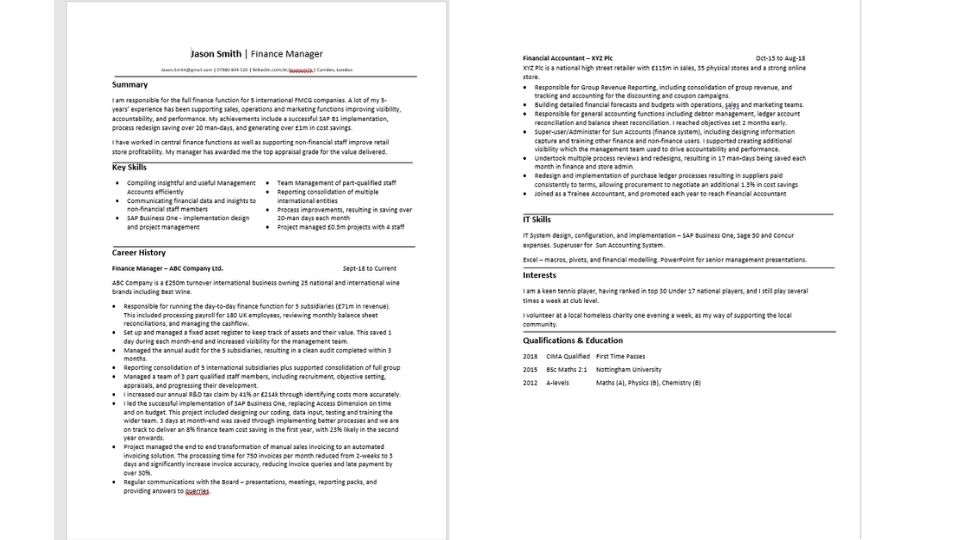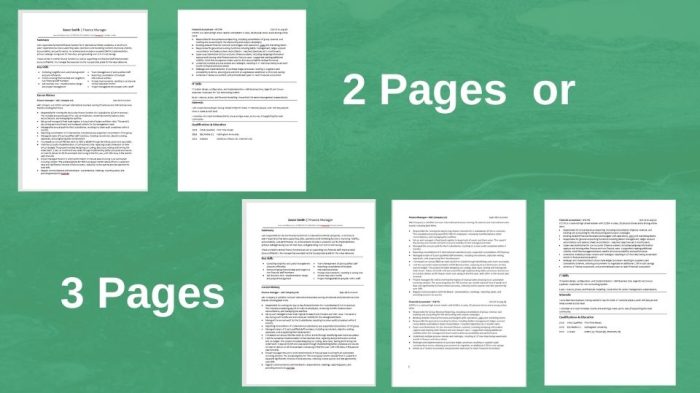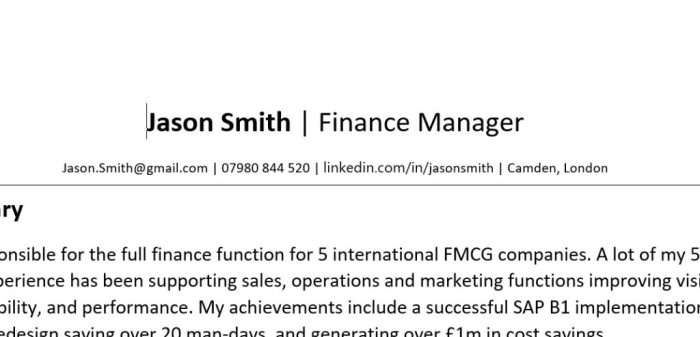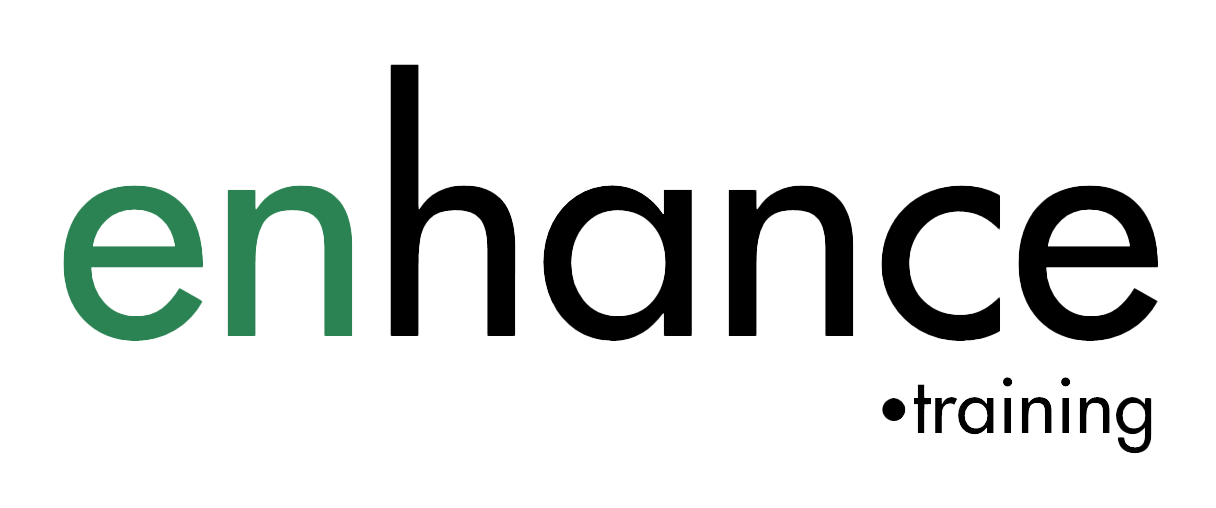How To Write a CV – To Get THE Job You Want

Learning how to write a CV is a pretty essential skill for everyone. The purpose of your CV is to get you invited to interview. A company is advertising jobs and hiring because it has a set of problems. Those problems might be not enough staff numbers in a particular area, or they might not have the skills they need to grow or improve their business. They are likely trying to solve as many current and potential future problems as they can with each hire the business makes.
Learning how to write a great CV is more involved – a CV that the hiring manager reads and thinks this person can really help me – I must interview them as soon as possible. Writing a great compelling CV is about understanding the problems, and then demonstrating you have solved them before and will do so again. And you have to do this in as little space as possible and be very convincing.
How to Write A Great CV
- What to include in a CV
- What CV Layout to use
- How long to make my CV
- What contact details to include on your CV
- What to include in a CV Personal Statement or in CV Personal Profile
- How to include your work experience
- How to use education on your CV
- Tips on CV language to use
- What CV mistakes to avoid
There will be examples in section covered.
So let’s start with
What to Include in A CV (Curriculum Vitae Or Resume)
What to put in a CV for the majority of jobs available includes:
- Your name and job title
- Your contact details
- A summary statement
- Your work experience to date
- Your education
What should a CV include in addition to the above really depends on your level of experience, the job that you are targeting and what the potential employer requires of those applying (the problems they need to solve)
When thinking about what to put on your CV make sure that you answer all the requirements of your typical target role or the specific job advert that you are responding to.
A typical hiring manager or recruiter spends somewhere between 6 and 10 seconds skim reading your CV before putting in the review pile or putting in the reject pile. To get the attention of hiring manager, you have to communicate all the RELEVANT points clearly and quickly, so don’t write about everything you have done.
Write enough on your CV to get the reader’s interest. Don’t write about everything you have done on your CV!
Listen on Podcast
The CV layout or CV Format
Choosing a good CV Template is a really important first step in writing a CV. There are so many freely available templates it is hard to know which one to choose. It is tempting to go for a visually striking CV template with lots of colour sections or blocks, graphics, photos or similar which makes the CV visually interesting.
If you look at the standard CV templates all the large recruiters use (e.g. Michael Page, Robert Half) they are very simple, black and white documents without any fancy visual effects at all. The reason they use very a simple CV format is that you want the reader’s focus on what you write, not what colour or font you have chosen to use AND Applicant Tracking Systems (used by 98% of large companies and all recruiters) don’t like fancy CV templates which means you don’t appear in the searches made using these systems.
A good CV Template should:
- Use a simple black and white format
- Use a reading typeface (Arial, Calibri etc) in 12-14 point font size
- Make good use of white space so the CV doesn’t appear crowded
- Use a lot of subheadings so you can find information quickly and easily
- Use bullet points for concise communication (good for skim reading)
- Use positive action orientated language

The structure of your CV
should follow this order from top to bottom
- Name and Job Title
- Contact Details
- Summary Section (CV Personal Statement / CV Personal Profile)
- Skills Summary
- Work Experience (starting around halfway down the first page)
- Languages, Interests, IT Skills and Other Sections
- Education
Structuring your CV in this way follows the structure that most hiring managers and recruiters expect and therefore they find it quicker to find the information they are looking for, which helps you avoid the reject pile.
For a professional CV format, the above CV Structure should also be followed. For a professional CV format, more care is put into getting the visual look and feel of the CV right, balancing text and white space, plus making sensible use of simple lines to break up sections. This keeps a visually professional CV which can also be easily read by Applicant Tracking Systems.
Don’t use colour blocks, non-reading typeface, photos and other graphical additions will detract from your application to professional and managerial level CVs. CVs for these roles need to be conservative in how look and you impress with the content.
How long to make My CV
You limit the length of your CV to include only the most relevant information for the target role you are applying to, even if you have decades of experience.
For most people with work experience, your CV should be two or three pages long. Don’t use a one page CV as you will not be able to demonstrate your skills and experience in enough depth. Research has proven that a 2 or 3 page CV is more successful in winning interviews even for entry level roles
Those will little or no experience should aim for a one page CV.

Contact Details on Your CV or Resume
Immediately below you name and job title you want to include these contact details:
- Your phone number (ideally a mobile number)
- Your professional looking email address
- The area in which you live
- Your LinkedIn URL or address
You need these to be easily found so that the recruiter or hiring can contact you to invite you to interview.

Personal Summary for CV
Your CV personal statement should be a Summary of the contents of the CV targeting the most important requirements of the target role you are going for and summing the value you have created for the employer.
The CV opening statement sets the scene of the CV and gives the reader flavour of what to expect when reading the rest of the CV. Needless to say that if your CV opening statement is not relevant and compelling then the rest of the CV is unlikely to be read.
You make the CV personal statement relevant by matching your solutions (skills and experience) to the requirements of the role (employers’ problems).
You make it compelling by providing evidence through examples and achievements that you have solved these problems before. An example – you are going for a digital marketing role and your summary statement might include “delivered revenue growth of 142% or £4.2m with ROI of 4.2x over last 12 months”
This would grab my attention and compel me to look at the rest of the CV.
Think about what information would be sensible to include in your CV summary – for instance, the level at which you operate, your sector experience, key achievements or examples of your results, the total measurable value you have added.
Keep everything you write relevant to your target role or the specific role you are applying to.
CV Work Experience
Your work experience on your CV should start about halfway down the first page on your CV.
For those with experience, this is the most important part of your CV. Your current or most recent job is your main act with everything else being supporting acts.
Write your work experience section in reverse chronological order with your most recent job showing first and work backwards.
Your most recent job ideally should take up the most space within your work experience section and should be used to match the greatest number of requirements the employer has. The two main reasons for this – your current job is your most recent experience, and it is the first section a reader of your CV will look.
Skills need to be practiced to continue to be strong and sharp. This is true with work skills and hence most recruiters will view your most recent work experience as the most valuable indication of your current skills and the problems you can solve with those skills.
Avoid the temptation to just add another section to an old CV for your most recent role. The needs of you target role will not be the same as your last job search and you should make the whole of your CV focused on the needs and problems of your current target role. Updating the whole of your CV makes everything relevant and compelling rather than just part of your CV being so.
Don’t write much about experience that is more than 5 years old. It is less relevant and probably won’t be read. Keep your CV focused on recent work experience and achievements.
Why include achievements on your CV
You must include measurable achievements on your CV. 34% of candidates don’t include any measurable achievements within their work experience. Achievements are your “proof” that you can do what you write. Achievements demonstrate the value that you have created for your employer.
Without achievements or “proof” you are just making statement on your CV which anyone can do. Measurable achievements add credibility to your CV and build the confidence of the reader in you.
Education on your CV
Put your education as the last section on your CV. This is the most common location for it on UK CVs and the first place a reader will look for your education section. Everything you can do to make it quick and easy for the reader to find the information they want increases the chance you will get invited to interview.
Everyone spends a lot of time in education and the results you gained in education indicate your work ethic and ability and interest to learn. These are all attractive qualities for employers of professional staff.
List out all the relevant education and qualifications that you have.
Listing out your qualifications in reverse chronological order work well assuming you have increasing progression of the level of qualification. You put your highest level first.
If you have above average grades, then list them on your CV. If you have below average grades, leave them off your CV.
CV language
The language you use on your CV and how your write about your experience and examples is very important.
Use active language that tells the reader what you have delivered personally. For example write:
- Delivered a 126% increase in revenue through improving advertising audiences, click through rates on adverts and landing page conversions.
Rather than a much more passive and less impressive
- Responsible for increasing revenue in the Online Courses Division over the last year
Work hard on how you communicate what you have done. Don’t repeatedly use the same words to start your bullet points. Try to avoid using
- responsible for or
- involved in or
- worked on
and similar general or unspecific language. Keep everything focused on the value that you have created for your employer.
Use active verbs not passive verbs when you write a CV
You want to show through how you write you CV that you take responsibility and deliver results, while keeping all stakeholders happy.
Examples include:
- Drive
- Responsible
- Reliable
- Delivered
- Created
- Proactive
- Supported
- Trained
Don’t use passive statements, or ones that suggest you may have been a passenger rather than the driver (assuming you were the driver).
Try not to use generic statements or skills that are minimal requirements
You do not have enough space to waste with general statements when writing a CV so try to avoid them. Some examples to avoid might include:
- Excellent communication skills (demonstrate this with a clear CV that is easy to read and follow!)
- Goal driven – an expected skill / approach
- Flexible – nearly every job needs flexibility.
- Motivated – you should be keen on the job to apply.
- Multi-tasker – a requirement of nearly every job
- Independent – the employer is looking for problem solvers, so independent thinking is needed
- Detail orientated – a requirement for many jobs
- Self-motivated – a requirement of nearly every job
- Team player – a requirement of nearly every job
- Hardworking – demonstrate this with your experience and what you have achieved rather than stating it.
Don’t use the phrase “Curriculum Vitae” or “CV” as a title when writing a CV. It will be clear to all what the document is and leaving it out saves space.
CV mistakes
There are lots of mistakes that you can make on your CV that will ruin your chances of getting to interview. Some of the more common ones include:
- spelling mistakes and poor grammar
- including information which is not relevant to the target job
- writing too much – for example a CV of 4 pages or more
- not using bullet points (which make skim reading a lot easier)
- overly exaggerating or lying on your CV
- using a non-professional email address like johntheman@gmail.com
- using a CV temailto:johntheman@gmail.complate that can’t be read by Applicant Tracking Systems
- using abbreviations, acronyms, or corporate speak that the average person doesn’t understand
Go through your CV to make sure that you remove all the common mistakes made. Make sure your CV looks professional and how your write is clear and concise. You need the reader to follow and understand
Final thoughts on how to write a CV
Once you have put your draft CV together, put it down and come back to it the next day. Review it for spelling, to ensure it is easy to read and well laid out. Finally amend it to add extra polish.
Then get partners or friends to read it and give you feedback. Make sure they can easily understand all the points you have made. When you have done this a few times you will have written a good general CV that reflects your experience and skills.
Finally, each job you are applying for is going to be slightly different. Tweak you CV to better solve the problems each employer has.
Good luck getting the interviews you want.




